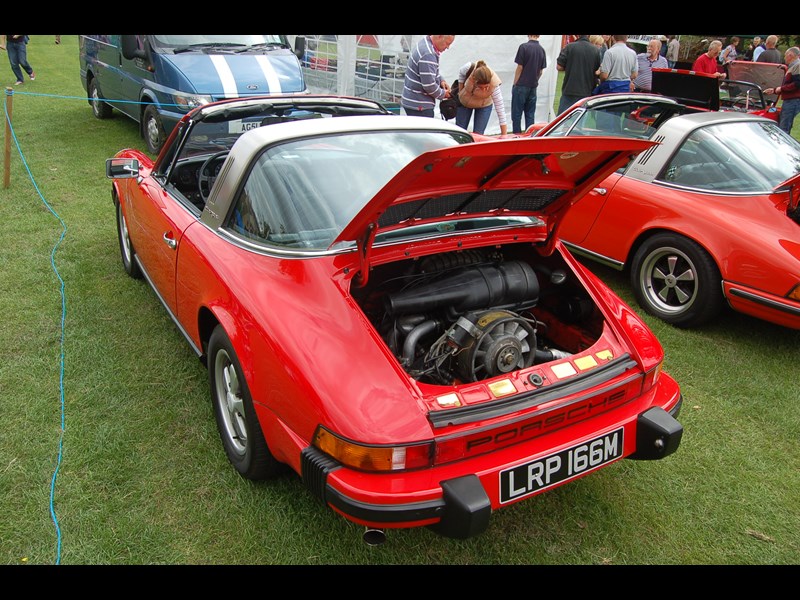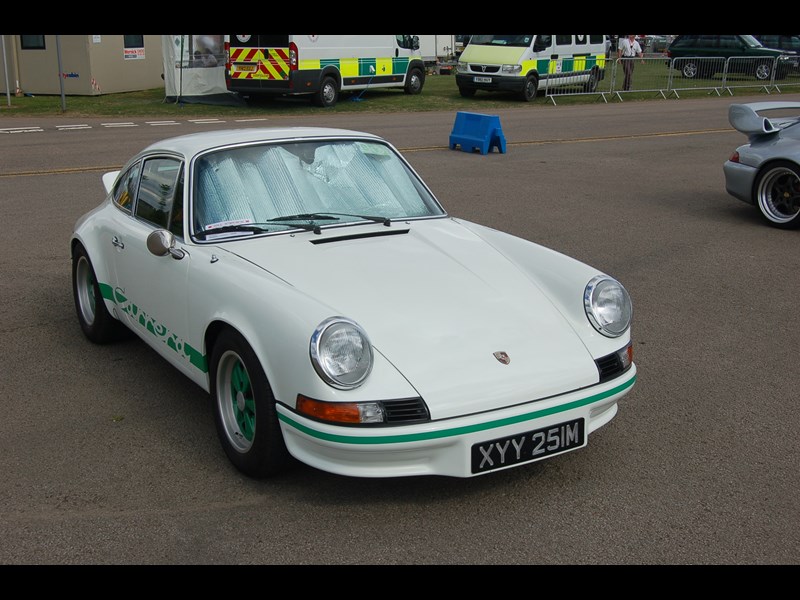The 911 is a serious sports car, and it’s hard to believe the model has just celebrated its half century. With this sort of history, driving one is just the special experience you might imagine, one dominated by that air-cooled engine slung out back.
It makes a terrific noise under hard acceleration that encourages you to push harder, something that’s easy to do with the power on offer. And if 180bhp doesn’t sound like much in this day and age, it is still enough to shove the coupé to 60mph in around 6.5secs – later 204bhp cars would crack 6sec.
But it’s not just about speed of course as there is also the famed 911 handling to master, and learning to get the best out of one of these cars is all part of the experience. The reputation isn’t great and a downhill corner taken at speed – especially in the wet – could well result in a tricky moment, but plenty of owners reckon that reputation is unfair.
Taking a ‘slow in/fast out’ approach to cornering works best, but in the dry the traction endowed on the 911 by that rear-engine layout is undeniably impressive. So too is the steering, which feels alive in your hands as you thread the compact SC down the road, and with no power assistance to corrupt the feel it’s a very responsive set-up.
The suspension works well too, the nose gently bobbing up and down courtesy of those torsion bar springs, and the brakes are powerful. The cabin of the SC is classic 911 too, the driver faced by a five-dial instrument pack, rev-counter directly ahead. Okay so there is a somewhat scattergun approach to the minor controls but it’s easy to get used to, and in any case there is plenty else to concentrate on including the quirky floor-hinged pedals. The spindly gear lever looks a touch awkward but actually proves fine to use. With a good driving position and excellent visibility the 911 could just be the perfect everyday sports car.
WHAT TO LOOK FOR
1 Despite the galvanized body, 911s of this vintage are susceptible to corrosion and eradicating it can cost a fortune. Careful checking is needed – preferably by a specialist – concentrating on areas such as the front wings (particularly around the headlamp bowls), the sills, and the ‘kidney bowls’ that sit at the rear of the sill behind each door opening. Look closely for any signs of bubbling beneath window rubbers, especially the front and rear screens, and pay particular attention to the B-pillars – a mixture of steel and aluminium means they corrode around the door catches and can be costly to fix.
2 Check the bumpers are firmly affixed as the mountings rot. You need to check the floor pan thoroughly including within the front luggage compartment as water ingress might have allowed rot to take hold. Only ‘Sport’ models had a rear spoiler fitted as standard, so ensure aftermarket additions are fitted properly.
3 The characterful flat-six engine is tough, but only if it’s been maintained correctly. Neglect will play havoc with reliability (and with your bank account) so check carefully for excessive exhaust smoke, signs of low oil pressure, or major oil leaks – minor weeps are common and usually nothing to worry about. Timing chain tensioners are a weak spot and failure will destroy the interference engine, so ask when they were last changed, and what quality of parts were used. Cylinder heads can suffer from broken studs which aren’t always obvious so check around the join between head and cylinder barrel for signs of air or oil leakage. Poor running could be down to issues with the Bosch injection
system, which may need specialist attention to sort. A loose fuel pump relay in the front luggage compartment can cause sporadic cutting out. Various revisions saw the 180bhp output of early cars raised to 204bhp by the end of production.
4 The SC was fitted with the ‘915’ gearbox, a source of much debate among 911 drivers and enthusiasts. Don’t ignore one with issues as it won’t be cheap to fix, but the recalcitrant gearchange that many complain of can differ between cars and some adjustment is possible – slow and deliberate ‘changes seem to be key to extracting the best from it. It is worth checking for signs of a tired clutch, as replacement is labour-intensive. Listed as a special option by Porsche, the three-speed ‘Sportomatic’ auto ‘box isn’t especially well-regarded and was dropped after 1979.
5 Suspension is a combination of MacPherson-style struts at the front and semi-trailing arms at the rear, with torsion bar springs at both ends. Worn bushes aside, it’s a sound arrangement that rarely gives trouble. A check of the mountings for corrosion is recommended while brakes and steering should be similarly trouble-free and any car that’s been maintained properly should fine here. Wheels were either ‘cookie-cutter’ ATS rims or the familiar Fuchs items, and both can be refurbished at reasonable cost. Upgrades and modifications to brakes/suspension are fairly common, so ensure you’re happy with the standard of work.
6 It’s worth ensuring the heating system works okay – rotten heat exchangers are the bugbear here – and likewise the optional air-conditioning if fitted (repair costs may have deterred previous owners).
7 The SC was the first full convertible 911, so needless to say you’ll need to check the condition of the hood and its frame. Also popular was the ‘Targa’ model – a name trademarked by Porsche – with its lift-out roof panel. Check the condition of the roof seals on both models and ensure water leaks haven’t damaged trim or begun to cause corrosio
Forget any thoughts that the SC is a poor-man’s 3.2 Carrera. Values are rising rapidly, and being one of the lighter and purer of the breed is proving popular with owners and specialists alike. They are certainly being appreciated more and if prices are yet to overtake the 3.2, then they aren’t far behind. Restoration costs can be eye-watering so buying a good one to begin with is advisable. Most have been rebuilt by now, but factor this in if this isn’t the case.
VITAL STATISTICS
Engine 2994cc/6-cyl/SOHC
Power 180bhp@5500rpm
Torque 188lb ft @4200
Top Speed 141mph
0-60mph 6.5sec
Economy 21mpg
GEARBO 5-spd man/3-spd auto
Weights & measures
Height 1320mm (52in)
Width 1626mm (64.1in)
Length 4291mm (169.1in)
Wheelbase 2272mm (89.5in)
KERB WEIGHT 1160kg (2557lb)
OUR VERDICT
Buy a 911 and you’ll own one of the world’s finest sports cars. The SC is a great example of the breed with all the classic design cues and strong performance, but caution is needed. A bad one will be a money pit – a good one however will be an absolute joy.

























































